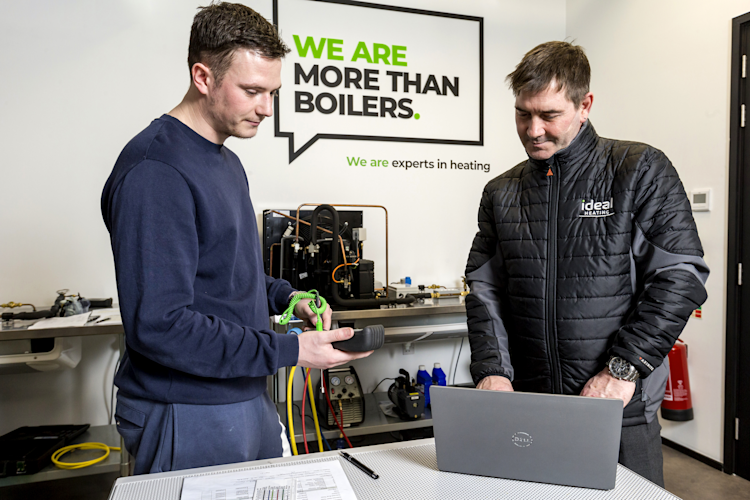
5 eco heating solutions to reduce your home’s carbon footprint
Reducing our personal carbon footprint is a goal for many people in 2021, and exploring efficient central heating solutions and renewable energy are effective ways to help us achieve it. In the UK we are seeing a drive to reduce carbon emissions in many areas of life, with new green products and environmentally friendly heating initiatives leading the way.
In this blog, we’ll look at sustainable home heating solutions that can make a positive impact on your carbon footprint. We’ll answer your questions about emerging eco-friendly technologies like heat pumps, as well as exploring other ways you can make a difference, like insulating your home or using green energy suppliers.
1.Heat pumps
More common in Europe, but a relatively new eco heating solution for UK central heating systems, heat pumps extract naturally occurring heat from the air, the ground or a body of water. Using a similar principle to your fridge, just in reverse, heat pumps contain liquid refrigerant which has a low boiling point, as the refrigerant absorbs heat from the air, ground or water it heats up and becomes a gas. The gas is then squeezed through a compressor to increase the energy in it even more. The heat from this gas is then passed into the water that flows round our heating system and keeps our homes at a comfortable temperature. This process means heat pumps are impressively effective even when the weather outside is cool.
Air-to-water heat pumps, which absorb heat from the air, can provide both central heating and hot water to our homes. At Ideal Heating, our first air-to-water heat pump is arriving in 2021. We’re excited to share our new range and play our part in helping the nation achieve its target of Net Zero carbon emissions.
2. Smart home thermostats
Not only do smart devices help make our lives easier, they’re also revolutionising the way we think about energy saving. Heating controls like the Halo Combi Wi-Fi thermostat from Ideal Heating give us more flexibility at home, allowing us to change the temperature from the comfort of our sofa; they also feature innovations that help your boiler comply with the Boiler Plus efficiency standards. Eco-friendly temperature control features include load compensation, which helps your central heating system bridge the gap between the current temperature and the required temperature more efficiently and geolocation, where Halo uses the location of householders mobile phones to only switch the heating on when someone is at home means you’ll only use the fuel you need to keep you warm so you’ll never be heating an empty home.
3.Compare green energy suppliers
If you want to find a quick and simple eco-friendly heating option, look into switching to a green energy supplier. Some companies offer 100% renewable electricity and carbon-neutral gas, providing a great way to lower your carbon footprint in the time it takes for newer heating solutions like heat pumps to become more widely available. Although these companies may have more expensive tariffs than some of their competitors, it’s a matter of deciding whether you’re happy spending a little more to help lower your carbon footprint. The good news is that comparison sites like Uswitch can help you find the best deal for green energy suppliers — it always pays to shop around.
4. Loft insulation
We all know that heat rises, so it’s no surprise that lofts are one of the rooms in our homes that warmth is most likely to escape from, especially during Winter. If your loft isn’t already insulated, it’s an excellent way of making your home more energy efficient. You may think that’s the end of the story if you’ve already tackled this job, but thickening existing insulation is an effective way of retaining heat.
For homes in England, Scotland and Wales, the Government’s Green Deal can help you make energy-saving improvements and find the best way to pay for them. How to make your property more efficient will depend on the size of your home, but typical examples include insulation for your loft, solid walls or cavity walls.
5. Solar power
The sunshine always manages to put a smile on our faces, but you could be leaping with joy if it also helps you save money and lowers your carbon footprint. Solar panels that generate electricity for your home have become much more affordable and efficient over the past decade; just like heat pumps, they can generate power even when the weather isn’t so bright.
The experts at the Energy Saving Trust have revealed that this green, renewable source of energy could save up to 1.6 tonnes of carbon every year for a typical home, depending on where you live in the UK. Once you’ve paid out to have them installed, you should immediately start enjoying the benefits and receiving smaller energy bills.
You’ll find further advice on heat pumps, central heating, servicing in our FAQs, as well as more in-depth guides on the Ideal Heating blog.


















